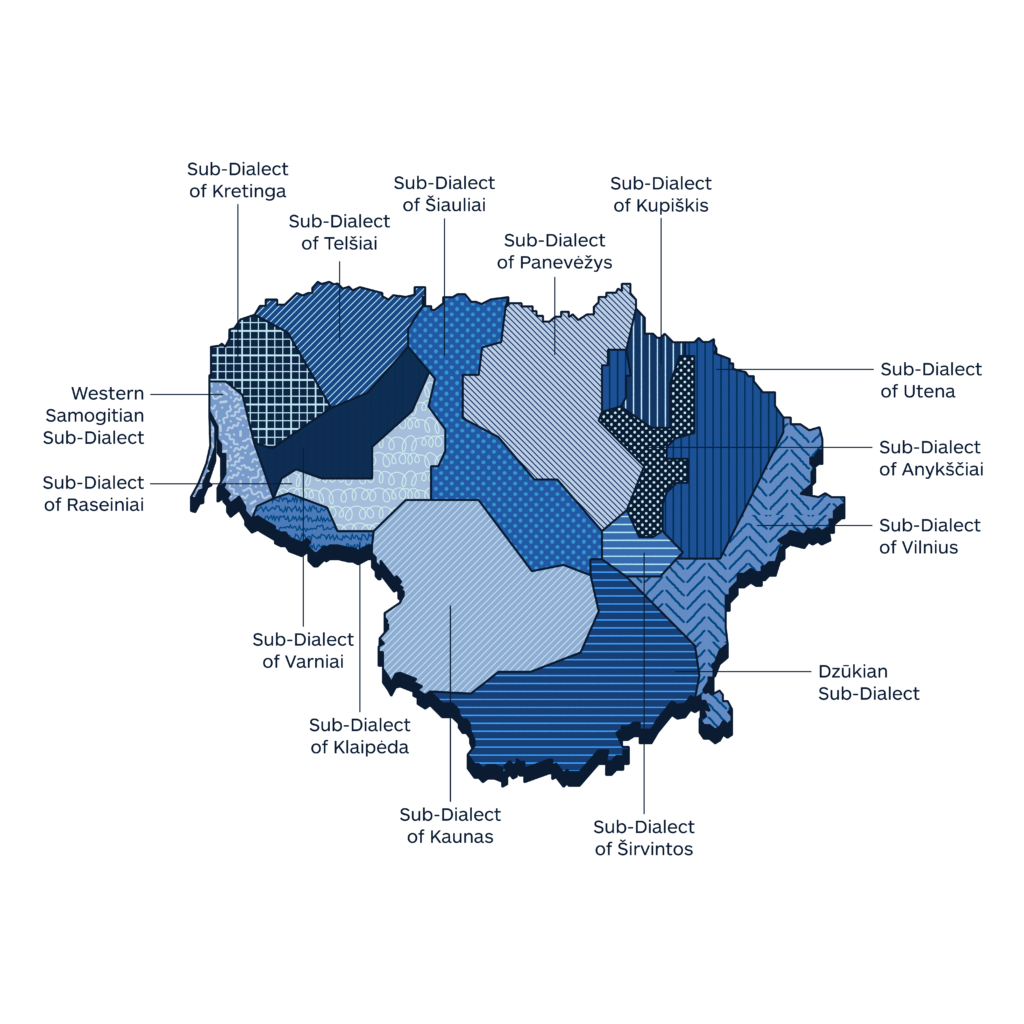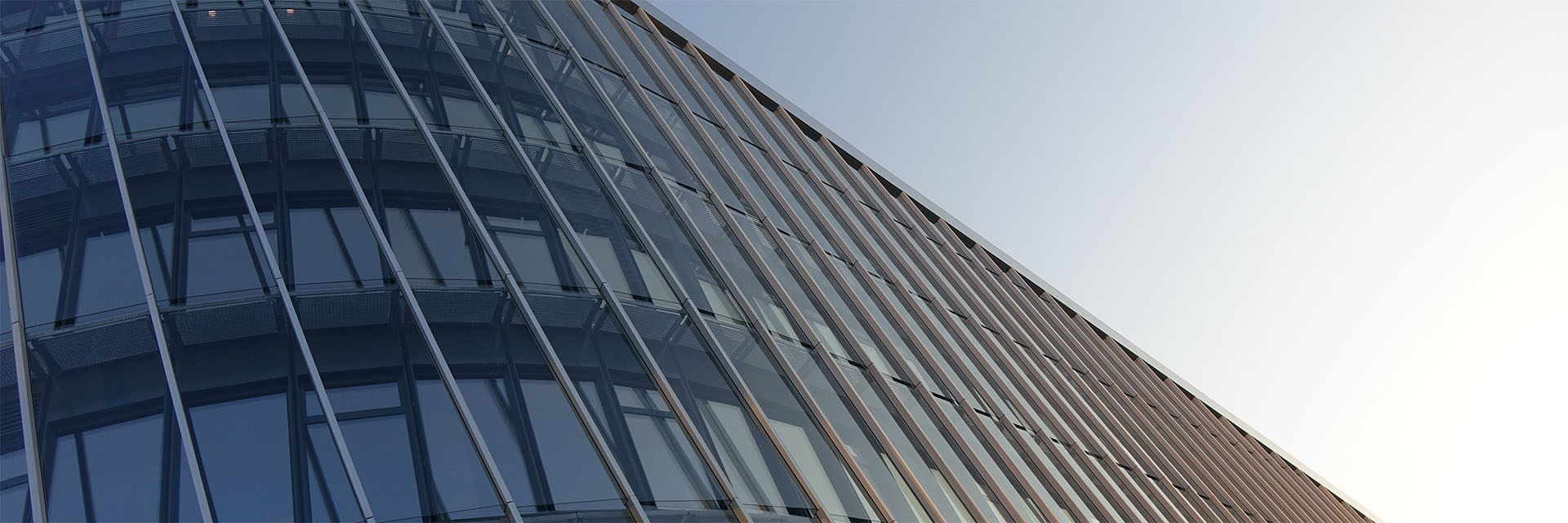Europe
To which language should you translate to localize in Lithuania?
LANGUAGE INSIGHT
Official language
Lithuanian (86.4%)
Actual languages
Lithuanian (86.4%), Russian (6.4%), Polish (4.6%), other (2.6%).
What the top 150 best localized websites in the world do in Lithuania
(Top 150 websites listed in the Global by Design ranking – published annually by Byte Level Research, this report provides a list of globally localized websites, showcasing best practices and emerging trends in their globalization)
- 62/150 localize by translating into Lithuanian
- 2/150 localize by translating into both Lithuanian and Russian
- 1/150 localizes by translating into Lithuanian, Latvian and Estonian
- 1/150 localizes by translating into both Lithuanian and Lithuanian Sign Language
- 1/150 localizes by translating into Russian
- 1/150 localizes by translating into both German and French
- 1/150 localizes by translating into both Russian and Estonian
- 1/150 localizes by translating into Russian, German, Italian, French, Spanish, Portuguese, Simplified Chinese, Traditional Chinese, Korean and Japanese
- 1/150 localizes by translating into Russian, German, Italian, French, Spanish, Portuguese, Simplified Chinese, Traditional Chinese, Japanese, Bahasa Indonesia, Hungarian, Polish, Romanian, Turkish, Thai and Ukrainian
-
3M
-
ABB
-
Accenture
-
Adidas
-
Adobe
-
Airbnb
-
Aldi
-
Amazon
-
American Airlines
-
American Express
-
Apple
-
Audi
-
Autodesk
-
Avis
-
Bayer
-
BMW
-
Booking.com
-
Bosch
-
British Airways
-
Bumble
-
Burberry
-
BYD
-
Canon
-
Capgemini
-
Cartier
-
Caterpillar
-
Chevrolet
-
Cisco Systems
-
Citibank
-
Coca-Cola
-
Costco
-
Dell
-
Deloitte
-
Delta
-
DHL
-
Disney+
-
Dyson
-
eBay
-
Eli Lilly
-
Emirates
-
Ernst & Young
-
Facebook
-
FedEx
-
Ford
-
Four Seasons
-
Fujifilm
-
GE
-
Gillette
-
GoDaddy
-
Google
-
Gucci
-
Haier
-
Heineken
-
Hermès
-
Hertz
-
Hilton
-
Hisense
-
Hitachi
-
Honda
-
Hotels.com
-
HP
-
HP Enterprise
-
HSBC
-
Huawei
-
Hyatt
-
Hyundai
-
IBM
-
IKEA
-
Intel
-
InterContinental Hotels
-
J&J
-
Jack Daniel's
-
Jehovah’s Witnesses
-
John Deere
-
Kellogg's
-
Kia
-
KPMG
-
L'Oréal
-
Land Rover
-
LEGO
-
Lenovo
-
Lexus
-
LG
-
Louis Vuitton
-
Lululemon
-
LUSH
-
Marriott
-
MasterCard
-
McDonald's
-
Mercedes-Benz
-
Merck
-
Microsoft
-
Mitsubishi Electric
-
Nestlé
-
Netflix
-
Nike
-
Nikon
-
Nintendo
-
Nio
-
Nissan
-
NIVEA
-
Oracle
-
Pampers
-
Panasonic
-
PayPal
-
Pepsi
-
Pfizer
-
Philips
-
Pitney Bowes
-
Porsche
-
Procter & Gamble
-
PWC
-
Revolut
-
Rolex
-
Royal Caribbean
-
Salesforce
-
Samsung
-
Sanofi
-
SAP
-
Sephora
-
Shopify
-
Siemens
-
Sony
-
Spotify
-
Starbucks
-
Steelcase
-
Stripe
-
Subaru
-
Tesla
-
The Church of Jesus Christ of Latter-day Saints
-
Tiffany
-
Tinder
-
Toshiba
-
Toyota
-
TripAdvisor
-
Uber
-
United Airlines
-
UPS
-
Visa
-
Volkswagen
-
Volvo Cars
-
Vrbo
-
Walmart
-
Western Union
-
Wikipedia
-
Wise
-
WordPress
-
Workday
-
Xerox
-
Xiaomi (Mi)
-
Zara
-
Zoom
If you need others information, below you can find a selection of economic/social/cultural data
Introduction
Language
Official language
Lithuanian (86.4%)
T-index
0.072%
T-Index ranks countries according to their potential for online sales.
Other languages
More than 80% of the country’s 3.8 m population speaks Lithuanian as their first language. Minority languages include Belarusian (1.5%), Polish (4.6%), Russian (6.4%). Others, most notably Ukrainian and Yiddish make up a further 2.1%. Russian 8.2%, Polish 5.8%
English
High proficiency (EF) – 19 of 112 countries/regions in the world- 17/35 position in Europe.
Demography
Capital: Vilnius
Currency: Euro
Population: 2,80 m
Population density: 45/km2
Economy
GDP: 66.45 USD (2020)
GDP per capita: 23,723.3 USD (2020)
Exports: $33.3 billion (2020)
Statistics
Internet users: 88% penetration, 2.35 million
Unemployment rate: 7.1% (2021)
Urbanisation: 68.25% (2020)
Literacy: 100% (2020)
Conventions
Numbering system
Arabic numerals and comma as decimal separator, space as thousands separator
Date format: yyyy-mm-dd
Time: 24h time system
Country code: 00370
Language data sources: Worldatlas/Britannica//EF/Wikipedia; Demography data sources: IMF/Worldometers; Conventions data source: Wikipedia; Economy data sources: WTO/OEC/CIA/Esomar/Datareportal; Statistics data sources: Datareportal/WorldBank/UN/UNESCO/CEIC/IMF/Culturalatlas/Commisceoglobal
Facts and data
Economy
Imports
$31.5 billion (2020). Crude Petroleum ($1.6B), Cars ($1.17B), Packaged Medicaments ($1.01B), Broadcasting Equipment ($663M), and Refined Petroleum ($485M), importing mostly from Poland ($3.98B), Germany ($3.96B), Latvia ($2.47B), Russia ($2.4B), and Netherlands ($1.75B).
Financial inclusion factors (over 15 years of age)
• 83% have an account with a financial institution
• 16% have a credit card
• 56% make online purchases
Ease of doing business
It is very easy to conduct business (rated 81.6 out of 100) ranked 8th out of 34 OECD high-income countries, and ranked 11th out of 190 countries worldwide (2022, World Bank).
Global Innovation Index
Ranked 25th out of 39 European countries, and 39th out of 132 worldwide.
The Global Innovation Index captures the innovation
ecosystem performance of 132 economies and tracks the most recent global innovation trends.
Exports
$33.3 billion (2020). Refined Petroleum ($1.85B), Other Furniture ($1.61B), Wheat ($1.3B), Rolled Tobacco ($1.06B), and Laboratory Reagents ($1.05B), exporting mostly to Russia ($4.09B), Latvia ($2.95B), Germany ($2.58B), Poland ($2B), and the Netherlands ($1.79B).
Main local online stores
skelbiu.lt, aliexpress.com and pigu.lt, alio.lt, ebay.com, amazon.com and varle.lt.
Economic freedom
‘Moderately free’ (rated 72.2 out of 100) ranked 14th
out of 43 European countries and ranked 20th out of 186 countries worldwide (2022, Heritage Foundation and Wall Street Journal).
Economy data sources: WTO/OEC/CIA/Esomar/Datareportal
Service Imports (2017)
Source: OEC
Service Exports (2017)
Source: OEC
Most complex products by PCI
Product Complexity Index measures the knowledge intensity of a product by considering the knowledge intensity of its exporters
Source: OEC
Most specialised products by RCA Index
Specialisation is measured using Revealed Comparative Advantage, an index that takes the ratio between Lithuania observed and expected exports in each product
Source: OEC
Export Opportunities by Relatedness
Relatedness measures the distance between a country's current exports and each product, the barchart show only products that Lithunia is not specialized in
Source: OEC
Media
Media language
Lithuanian
Information channels:
Lithuania’s private broadcasters compete with the public networks run by Lithuanian National Radio and Television (LRT). TV is the most popular medium and the sector includes digital terrestrial, cable and online outlets. The popularity of print media is on the wane, reflecting a global trend. Some former print titles have relocated online. Media ownership is concentrated among a small number of domestic and foreign companies. Although the media are free and operate independently of the state, anti-Western rhetoric from Russian media targeting the Baltic states has prompted tighter controls. Lithuania has imposed fines and rebroadcasting bans on some Russian TVs and 2015 legislation makes sanctions over “war propaganda” easier to impose. Around 1.4 million Lithuanians use Facebook. The BBC World Service broadcasts in Vilnius on 95.5 FM.
The press
Lietuvos Rytas – leading daily
Vakaro Zinios – tabloid daily
Kauno Diena – daily, based in second city Kaunas
Verslo Zinios – business daily
Veidas – political weekly
Television
Lithuanian Radio and TV (LRT) – public, operates three networks
TV3 – national, commercial
LNK – national, commercial
BTV – national, commercial
Radio
Lithuanian Radio and TV (LRT) – public, operates three networks
M-1 – commercial, music and news
Lietus – commercial, music
Ziniu radijas – commercial, news/talk
Russkoye Radio – commercial, talk and music in Russian
News agency
ELTA (Lithuanian News Agency) – private
Baltic News Service (BNS) – private
15 min news portal
Delfi – news portal
Media data source: BBC
Internet Data
Internet users
88% penetration, 2.35 million
Share of web traffic by device
46.81% mobile phones, 51.95% computers (laptops and desktops), 1.23% tablet devices, others 0.01%
Median speed of mobile Internet connection
44.86 Mbps
Median speed of fixed Internet connection
80.55 Mbps
Mobile connection as a percentage of total population: 146%
Percentage of mobile connections that are broadband (3G-5G): 94.3%
Most popular web search engines
Google (95.81%), Bing (2.5%), Yandex (0.74%), Yahoo (0.49%), Duckduckgo (0.34%), Ecosia (0.04%)
Most used social media
Facebook (79.09%), Instagram (7.18%), Pinterest (5.79%), Twitter (3.67%), YouTube (3.12%), Reddit (0.71%)
Internet data sources: Datareportal/Statcounter
Social statistics
Life expectancy
75 yrs (2020)
Average age of the population
45.1 yrs (2020)
Health expenditure
7.01% of GDP
Graduates (tertiary education)
Tertiary attainment in Lithuania remains higher than in other OECD countries. In 2018, 42% of adults (25-64 year-olds) had attained tertiary education, 3 percentage points more than the OECD average. Attainment levels are much higher among younger generations: 56% of 25-34 year-olds are tertiary educated, 11 percentage points more than the OECD average. This rate increased by 14 percentage points between 2008 and 2018, a similar increase to the average across OECD countries
Economy data sources: WTO/OEC/CIA/Esomar/Datareportal
The Data Factbook is a work in progress project. Our community is helping us to fill it up always with new and updated data. Your contribution is precious. If you want to help us, please write your advices at imminent@translated.com
Languages research
Dialects spoken in Lithuania

Legend
-
Sub-Dialect of Kretinga
-
Sub-Dialect of Telšiai
-
Sub-Dialect of Šiauliai
-
Sub-Dialect of Panevėžys
-
Sub-Dialect of Kupiškis
-
Sub-Dialect of Utena
-
Sub-Dialect of Anykščiai
-
Sub-Dialect of Vilnius
-
Dzūkian Sub-Dialect
-
Sub-Dialect of Širvintos
-
Sub-Dialect of Kaunas
-
Sub-Dialect of Klaipėda
-
Sub-Dialect of Varniai
-
Sub-Dialect of Raseiniai
-
Western Samogitian Sub-Dialect
The language research that you will find in the maps published in this section is a work in progress. Our community is helping us to fill it up with always new and updated data. Your contribution is precious. If you want to help us, please write to imminent.factbook@translated.com
Photo credit: Augustas Mickus, Unsplash


